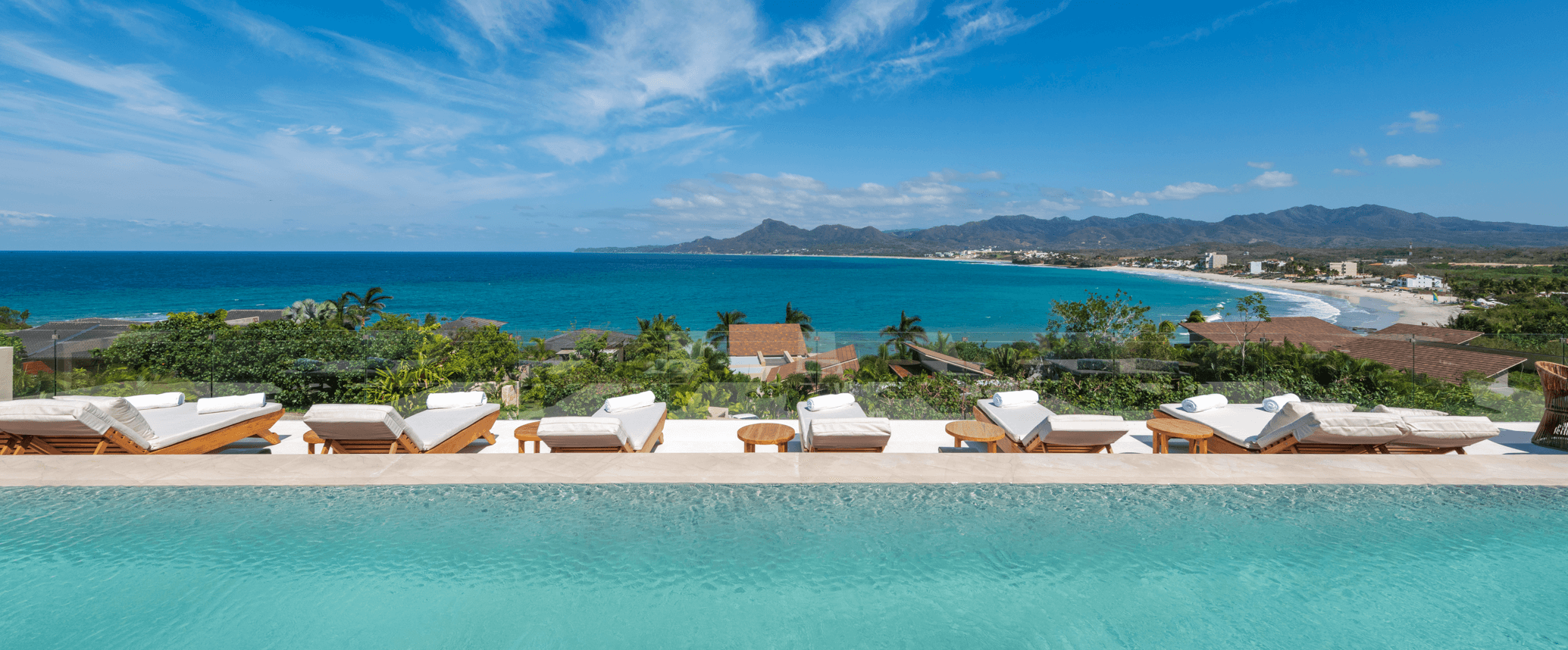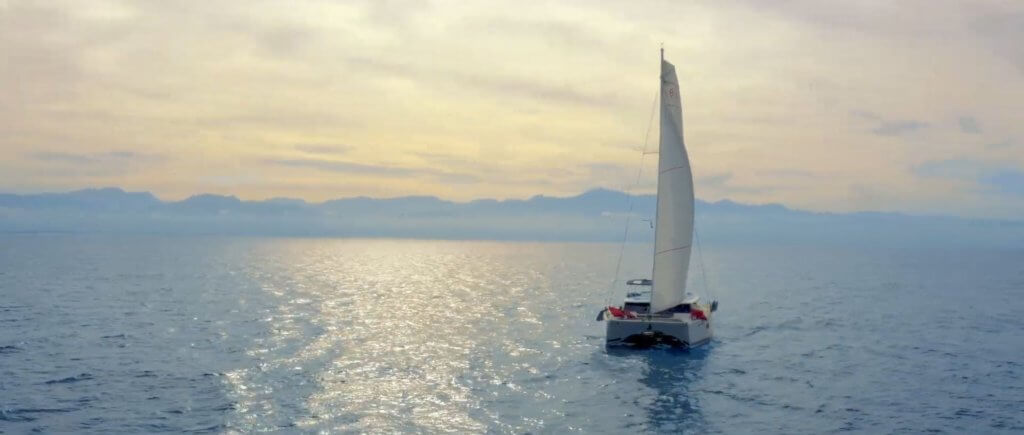Your Guide to Whale Watching Season in Punta Mita
Every winter, Banderas Bay transforms into a front-row seat for one of nature’s most breathtaking performances. From November through March, whale season in Punta Mita brings hundreds of humpback whales to these protected Pacific waters.
After traveling over 3,000 miles from the cold waters of Alaska and the Pacific Northwest, they arrive to mate, give birth, and nurture their newborn calves in the warm, shallow waters of Banderas Bay.
Like our guests who return each year to their favorite villa, these whales follow the same ancient migration patterns, drawn back to where they were born. The whale watching season in Punta Mita is deeply woven into life here, inspiring the art, architecture, and rhythm of this coastal community.
The Cultural Significance of Whales in Punta Mita
Throughout Punta Mita, and in many homes, you’ll see signs celebrating the whales. From bronze tails greeting you in the foyer to hand-carved wooden whales resting on shelves, or paintings gracing the home’s walls. These meaningful pieces of art throughout our community are tributes to the natural wonders that grace us each winter season.
At Casa Yeiya, the first thing you notice when you walk through the entrance is a stunning sculptural whale tail. This isn’t a reference to the famous golf hole—it’s an intentional artistic choice. The owners positioned it right at the entrance to set the tone for what you’ll find throughout the home. It’s become one of those pieces guests photograph immediately, before they’ve even seen the ocean views.
Perhaps the most dramatic expression of this connection sits at the world-famous Pacifico Jack Nicklaus Signature Golf Course. The legendary “Tail of the Whale” golf hole mirrors the graceful arc of a whale’s tail as it rises from the ocean. This natural island hole, accessible only during low tide, has become one of the most photographed golf holes in the world—a perfect marriage of sport and nature.

Why Mother Whales Choose Banderas Bay
There’s a reason humpback whales travel over 3,000 miles to give birth here. Banderas Bay isn’t just warm and beautiful—the shape of the bay itself creates natural protection.
Currents stay gentle. Predators stay away. It’s the kind of place where a newborn calf can figure out how to swim without fighting against the ocean.
The water temperature stays consistently warm, which matters when you’re a baby whale without much blubber yet. Mothers can nurse and teach without constantly worrying about threats. They show their calves how to breathe properly at the surface, how to dive, how to use those massive tail flukes that will eventually carry them back to Alaska.
Around 700 humpback whales show up each season. Most calves are born between late November and late January. Come February and March, the bay becomes a swimming school—mothers running their babies through drills, building up their strength and endurance for the journey north.
The whales have been coming back here for generations. That’s how you know this bay is something special.
Viewing Whales from Your Punta Mita Luxury Rental
If you’re staying in one of Mita Residential’s oceanview properties, you might be mid-sip of your morning coffee when you see it: a massive tail rising out of the water, then crashing back down with a splash you can see from your terrace. Or a full breach—all 40 tons of whale launching into the air before gravity wins.
From November through March, this happens regularly. Some mornings you’ll count five or six whales visible from your infinity pool. Properties that face the bay get the best views, but honestly, these whales don’t stay in one spot. They move, they play, they teach their babies.

The Ultimate Whale Watching Experience: Private Boat Charters
Watching whales play from your terrace is a completely different experience from seeing them while you’re on the water with them.
One minute you’re scanning the horizon, the next minute there’s a whale surfacing 50 feet from your boat. The sound alone—that deep, powerful exhale—it goes right through you.
Some captains have hydrophones, basically underwater microphones. They’ll drop them in the water and suddenly you’re listening to whale songs. It’s strange and haunting and nothing like you’d expect. Male humpbacks sing these long, complex songs that they change up slightly each season. Nobody’s entirely sure why, but it’s mesmerizing.
The tours here are licensed and follow rules about distance (boats have to stay back, though whales sometimes get curious and approach on their own). Good captains know where to look and what different behaviors mean. That tail slapping? Could be communication, could be the whale trying to stun fish, could just be playing around.
November through March are peak months—that’s when you’ll see the most action. Morning tours tend to have calmer water, which helps if anyone gets seasick. But afternoon tours work too, and sometimes the light is better for photos. Either way, bring a good camera and prepare to take 500 photos to get one perfect shot.

Planning Your Whale Season Experience in Punta Mita
Your Mita Residential concierge can orchestrate your private tours—they work with the best operators who have permits, are experienced, and know what they’re doing.
You can watch from your terrace with coffee, which is pretty great. Or you can get on a boat and be 50 feet away when a whale decides to show off. Both are worth it.
Every winter, these whales make a 3,000-mile journey to get here. They give birth in these waters, nurse their calves, teach them what they need to know. Then they turn around and swim all the way back to Alaska.
If you’re here during whale season, take the time to watch. It’s one of those things that pictures don’t really capture.


